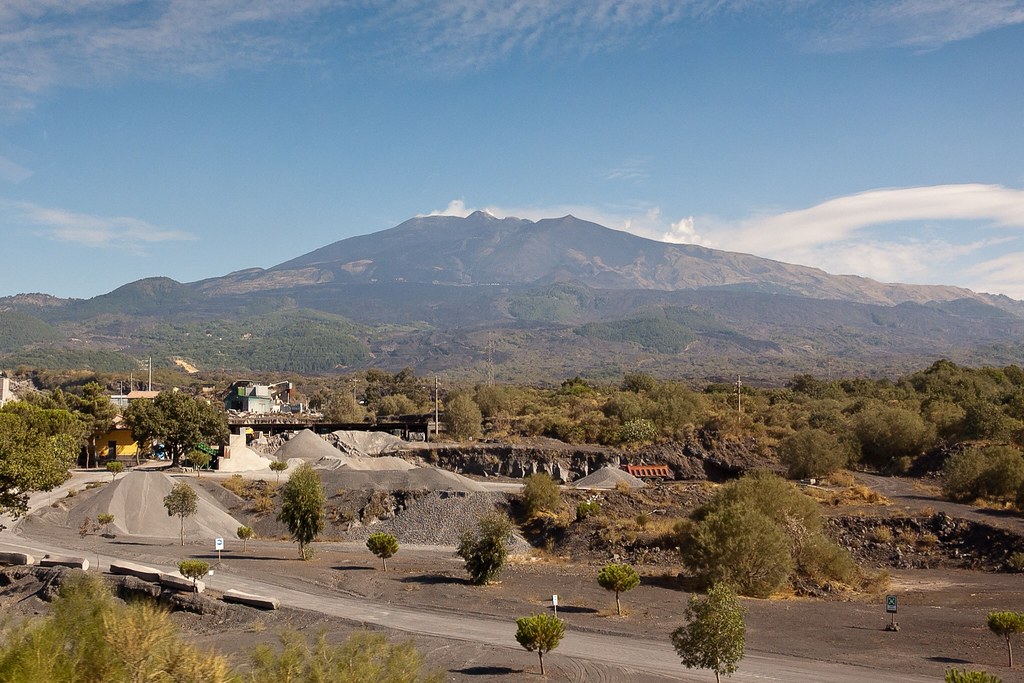
Above: Mount Etna from the approach road.
Before I show you some great photos from Etna, let me tell you a little about Catania. The second largest city in Sicily (the 'football' part of the Italian 'boot') and the tenth in the whole of Italy, Catania was founded in the 8th century BC. In the 14th century and the Renaissance, Catania was one of Italy's most important and flourishing cultural, artistic, and political centres, having witnessed the opening in 1434 of the first university in Sicily.
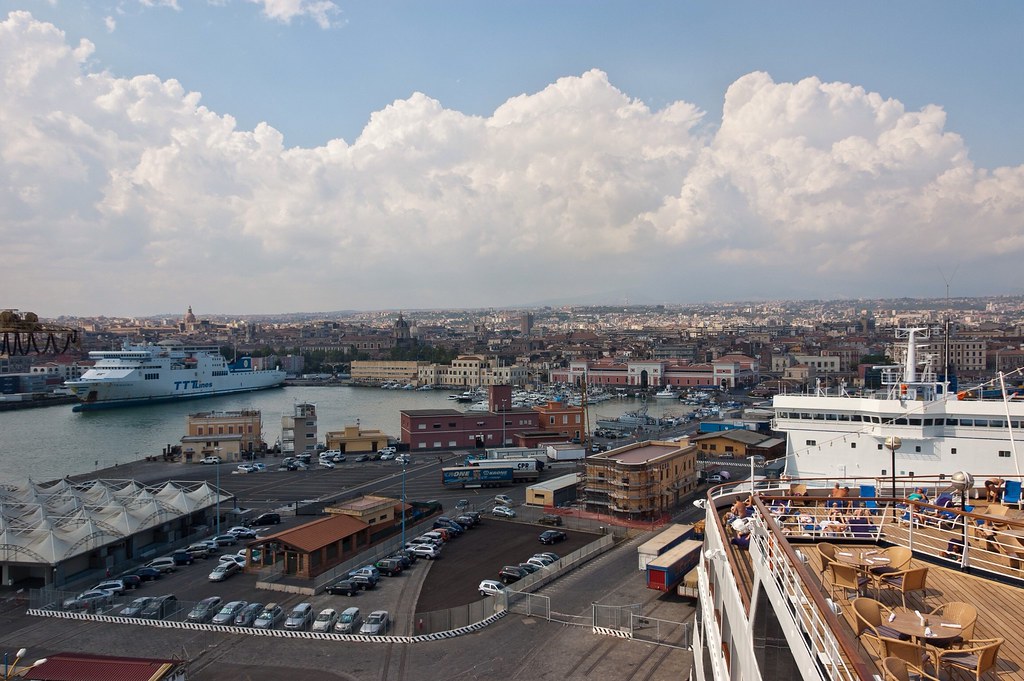
Above: Catania as viewed from the deck of the Ryndam.
After the conflict of World War II (during which Catania was bombed by the Allies) and the constitution of Italian Republic (1946), the history of Catania was, like other cities of southern Italy, an attempt to catch up with the economic and social development of the richer northern regions in the country. This attempt was partially hindered by a heavy gap in industrial development, and the threat of the mafia but despite these problems, Catania enjoyed economic and social development during the 1960s. In the first decade of the 21st century, this faltered somewhat and the city is again facing economic and social stagnation, aggravated by the economical crisis left by the Forza Italia administration of mayor Scapagnini in 2008.
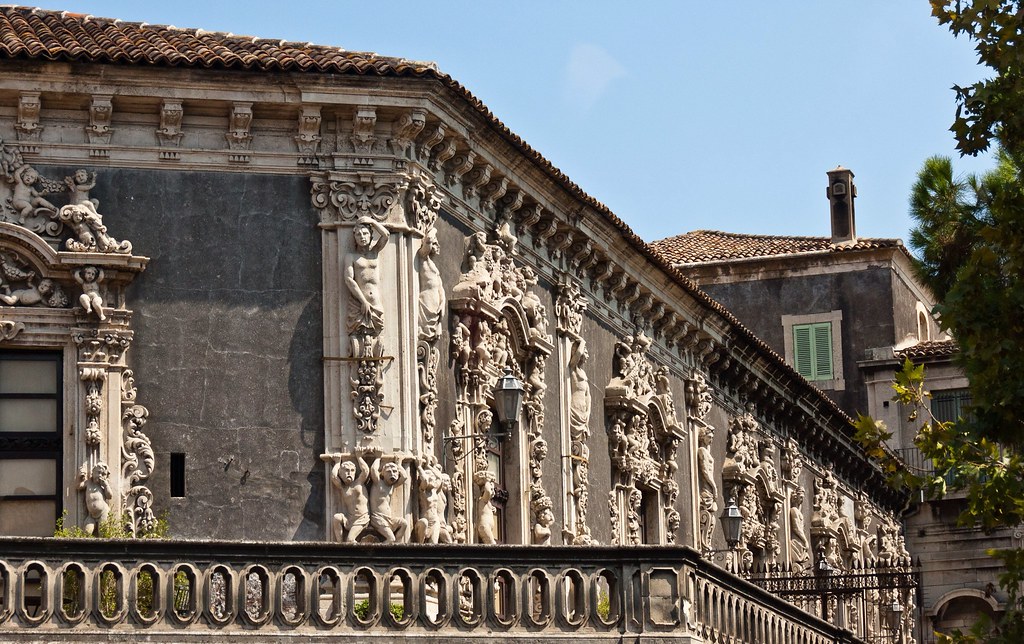
Above: Impressive sculptures adorn the sides of many buildings in Catania.
Catania is known for its seismic history, having been destroyed by a catastrophic earthquake in 1169, another in 1693, and several volcanic eruptions from the neighbouring Mount Etna volcano, the most violent of which was in 1669. However, the city also benefitted from its location at the foot of Etna; volcanic ashes produced fertile soil, adapted especially for the growth of vines. The city has been buried by lava a total of seven times in recorded history, and in layers under the present day city are the Roman city that preceded it, and the Greek city before that. On our drive around the city we saw the ruins of the Roman Amphitheatre in the centre of town.
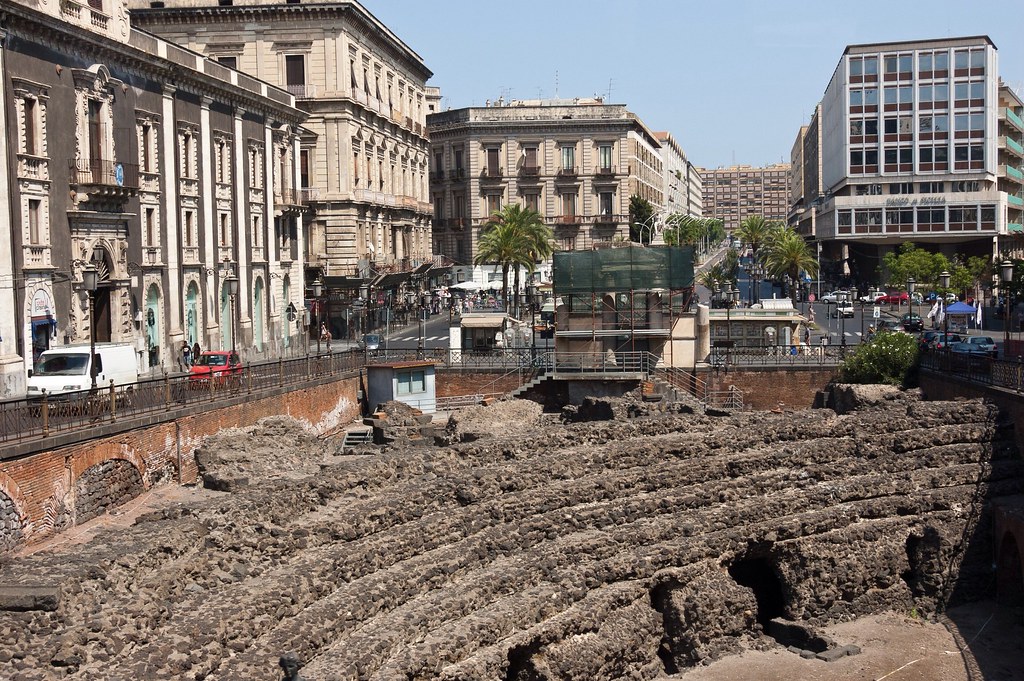
Above: The Roman Amphitheatre.
The opera composer Vincenzo Bellini was born in Catania, and a museum exists at his birthplace. The Teatro Massimo 'Vincenzo Bellini', which opened in 1890, is named after the composer and the opera house presents a variety of operas through a season, which run from December to May, many of which are the work of Bellini.
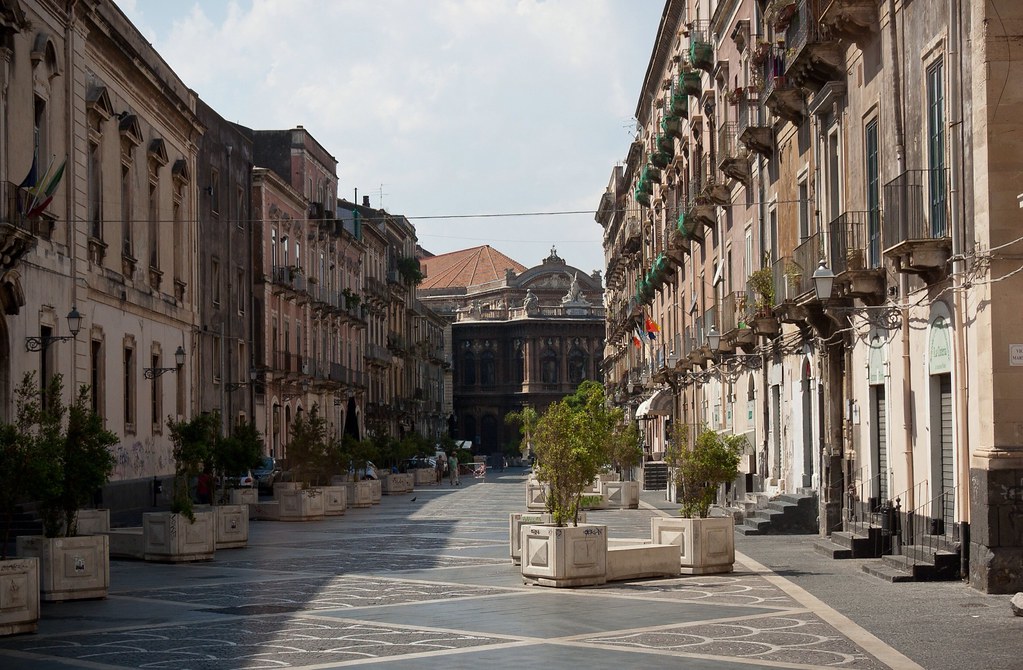
Above: Looking down the street towards Teatro Massimo 'Vincenzo Bellini'.
Just before I take you to Mount Etna, I want to mention a visit we made to the Gi.Val. Jewellery factory and shop. I normally dislike these parts of tours - compulsory visits to factories and shops where you are pressured into purchasing items - but this visit was different. Based in a luxurious private house, the small factory put on a very posh buffet for the passengers and gave us an interesting tour of the workshops.

Above: Touring the Gi.Val. Jewellery factory.
The highlight of my tour was the visit to Mount Etna which is the tallest active volcano in Europe, currently 3,329m (10,922 ft) high - two and a half times the height of the next largest, Mount Vesuvius (Pompeii blog coming soon!). The highest Italian mountain south of the Alps, Etna covers an area of 459 square miles and is one of the most active volcanoes in the world, in an almost constant state of activity.
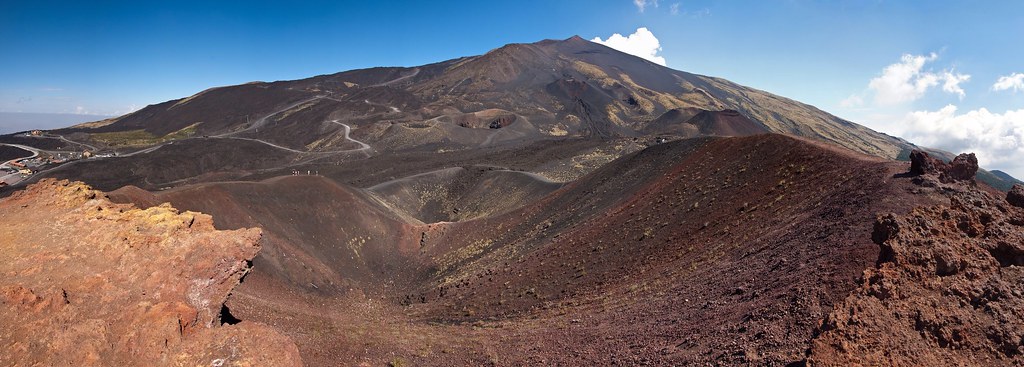
Above: Looking towards the summit of Mount Etna.
Volcanic activity first took place at Etna about half a million years ago, with eruptions occurring beneath the sea off the ancient coastline of Sicily. About 170,000 years ago eruptions built up the first major volcanic edifice, forming a stratovolcano in alternating explosive and effusive eruptions. Our bus wound up the side of the volcano and the fertile lands below soon gave way to lava both new and old.
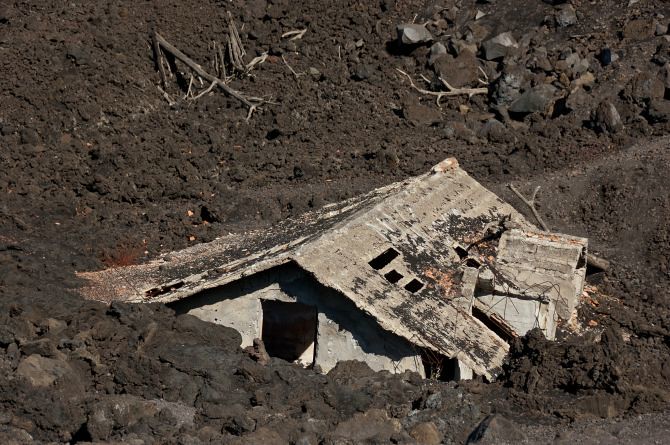
Above: A more recent eruption buried houses such as this one.
Eruptions of Etna follow a variety of patterns. Most occur at the summit, where there are currently six distinct craters. Other eruptions occur on the flanks, which have more than 300 vents, ranging in size from small holes in the ground to large craters hundreds of metres across. Summit eruptions can be highly explosive and spectacular, but rarely threaten the inhabited areas around the volcano. In contrast, flank eruptions can occur down to a few hundred metres altitude, close to or even well within the populated areas.
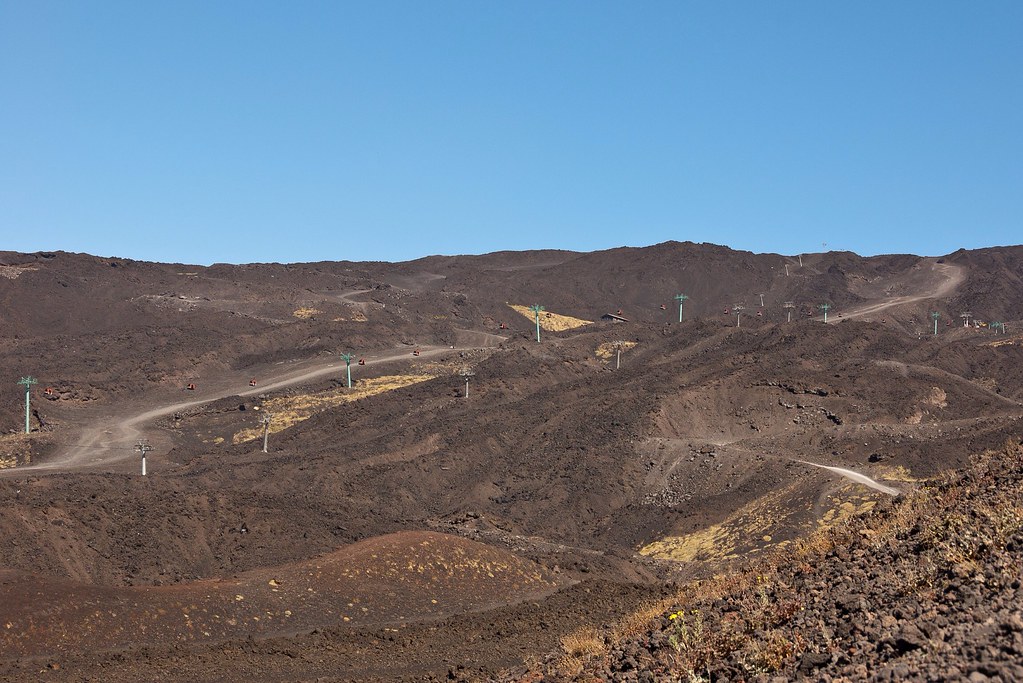
Above: A cable car takes visitors to the summit of Etna.
Numerous villages and small towns lie around or on cones of past flank eruptions. Since the year AD 1600, at least 60 flank eruptions and countless summit eruptions have occurred; nearly half of these have happened since the start of the 20th century, and since 2000, Etna has had four flank eruptions and three summit eruptions.
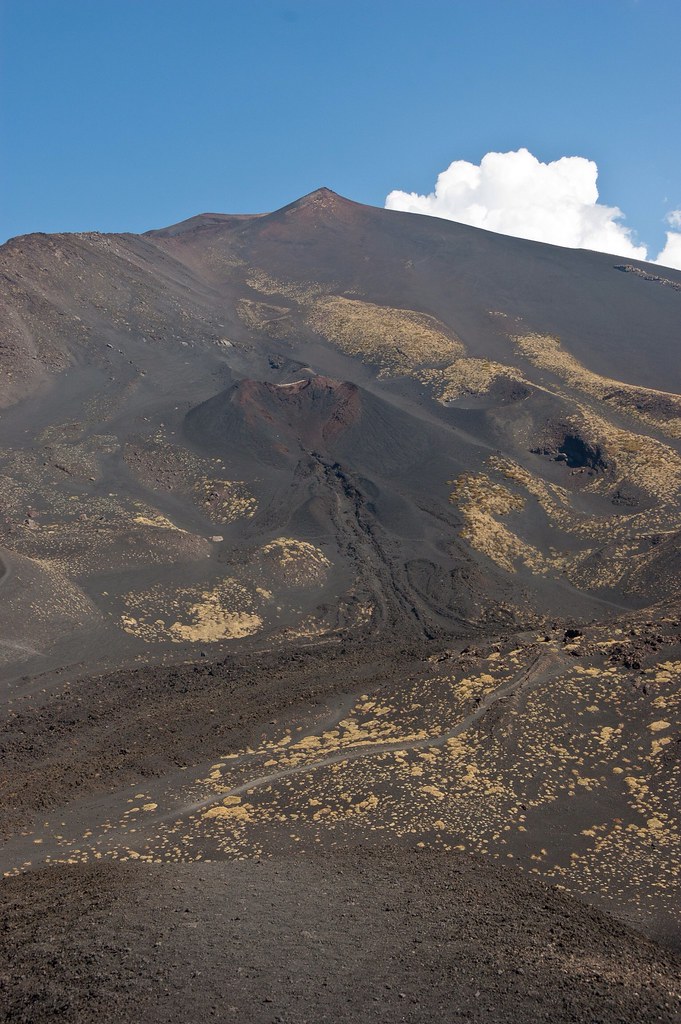
Above: You can clearly see trail of lava left here by a recent flank eruption.
Our tour guide took us to the Cateri Silvestri, a flank crater formed in 1986. This is one of the most popular craters for tourists to visit as it is easily accessible.
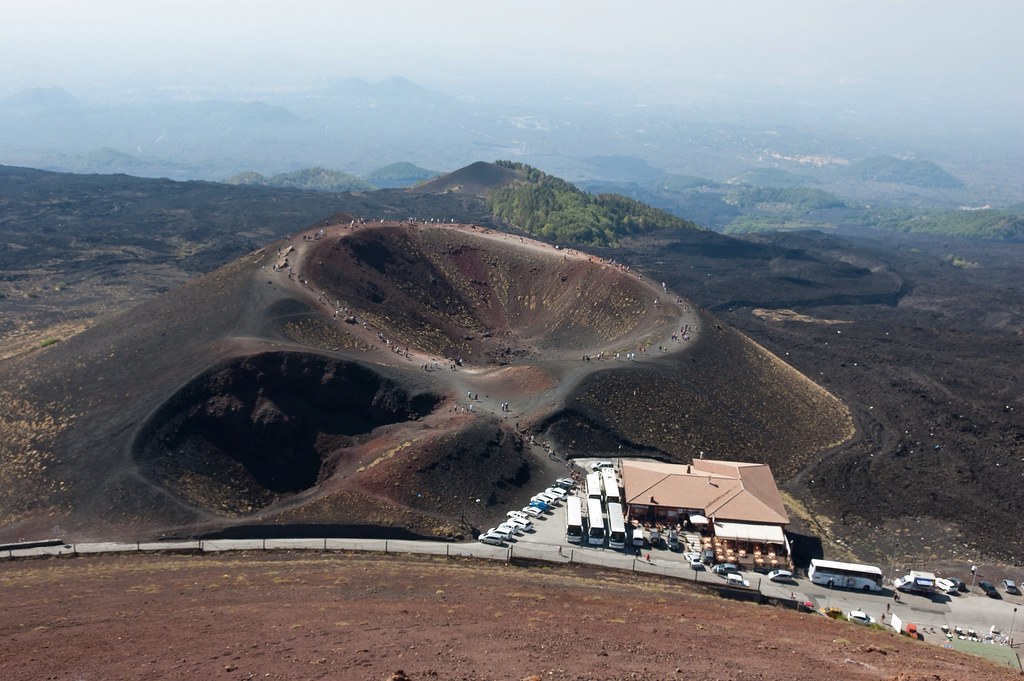
Above: Looking down on Cateri Silvestri, with the small tourist site on the right.
In the short time we had at the site, I decided to scramble up the side of a higher crater, formed in 2001. The path wound around the side of the crater and was difficult to climb owing to the looseness of the lava rocks and sand. The views were definitely worth it though (I took the previous picture standing on the stop of this crater!)
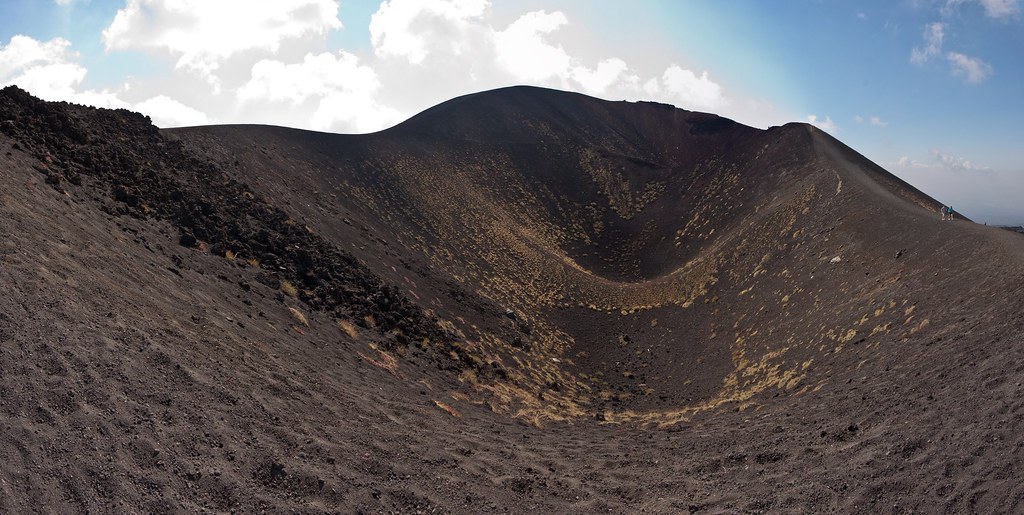
Above: The higher crater from 2001 which I climbed.
Thanks for reading this post - I have more Italian posts coming soon!

No comments:
Post a Comment